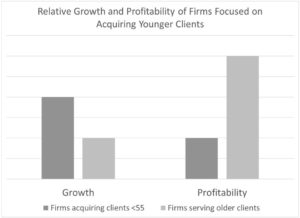Technology is continuing its push to take over all aspects of customer workflow in financial services, from paperless onboarding to risk assessment apps to instant loan decisioning to algorithm-based portfolio construction. In fact, there are few aspects of the customer lifecycle that can’t be touched by technology. But “can’t be” is different from “won’t be” and that distinction often comes down to adoption by customer-facing personnel. While few technologies are perfect and there’s often a specter of tech replacing humans, in our experience neither of these is typically the cause of tech adoption struggles. More often than not, tepid adoption is due to a failure to appreciate the intensity of people’s resistance to change.
You may think that the current system is so inefficient/ineffective/clunky that everyone will love the new one, but that is not the case. Why? For starters, nobody likes to be told what to do. Moreover, even when people work with far-from-perfect systems and processes, they don’t always embrace the new, required solution because they have devised work-arounds that have become an integral – if imperfect – part of their routine. Finally, for customer-facing personnel, you can take whatever resistance exists and multiply it by 10 because those on the front lines of customer interactions are understandably anxious about using systems they don’t know and trust when under the pressure of dealing with customers looking for quick resolutions to their problems.
To overcome these obstacles and drive long-term adoption, here are five key components for success:
- Understand the audience. When you want to figure out how to get customers to buy, you seek out research and information about their attitudes, behaviors, and pain points to identify points of leverage. Driving adoption is no different. Sitting with, talking to, and watching future users in action will fundamentally shape how you should present the new technology to them and how you can communicate its value more persuasively.
- Appreciate their anxiety. Change is hard. As the saying goes, “better the devil you know than the devil you don’t.” Dismissing or underestimating the anxiety surrounding technology change is practically a guarantee that you will underinvest in driving adoption and will fall short of your goals.
- Calculate the impact. How much time saved? How much more accurate? And, most importantly, how do those gains translate into benefits to the users and their work? Most change management efforts come equipped with an ROI calculation, but these calculations are often based on a hypothetical future state, rather than the users’ current state. Identifying the time spent on activities today and the potential value of that time redeployed will lead to more compelling adoption communications grounded in reality.
- Market the change. Driving adoption means influencing behavior. Influencing behavior is the primary job of marketing (albeit one that typically applied to prospects). The same core elements of a successful marketing campaign – nailing the message, identifying the most effective communication channels, and measuring results – should be applied to your adoption efforts with all the rigor and discipline of a lead generation or customer retention campaign.
- It’s a marathon not a sprint. If you were launching a new product to a skeptical market, you wouldn’t promote it once at launch and then never again. Driving tech adoption must be approached the same way. It’s fine to launch with a splash, but if that isn’t supported by ongoing efforts to highlight successes, handle ongoing objections, and measure effectiveness, the opportunity for wide-spread adoption will be missed.
If these five components make driving technology adoption sound like a marketing campaign, that’s because it is. Many businesses talk about “selling” users on new technology but miss the most important inference of this language: before selling, you need marketing. A company may not get as excited about 95% adoption as it does about big, new sales deals, but the amount of money invested in new technology means that it should. A great but unused application has as much value to the company as a big but unsigned customer: None.
